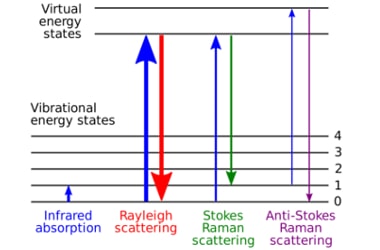New technique to identify sediments on Mars without crushing them
Q. What is Raman Spectroscopy?- Published on 22 Sep 16a. Common process to identify chemical composition of ancient rocks
b. Non destructive process to identify if sample contains carbonaceous matter
c. Both of the above
d. None of the above
ANSWER: Both of the above

Scientists at MIT-US have come up with a spectroscopic technique that would help the 2020 Mars Rover to identify sediments that are unaltered and maintain much of their original composition.
- Pristine samples permit scientists to identify signs of life on the red planet
- This new technique is based on an improved version of Raman spectroscopy
- Raman spectroscopy is a common, non-destructive process used by geologists to identify chemical composition of ancient rocks
- This is used to identify if the sample contains carbonaceous matter; presence of the same suggests sample may have signs of life
- With the new improved spectroscopy, scientists can estimate the ratio of hydrogen to carbon atoms in a sample
- Hydrogen can be used to determine if a sample is pristine or not
- In case it has low hydrogen, it may experience more heating altering the organic matter and losing hydrogen in the form of methane
- The Mars 2020 Rover will also be equipped with SHERLOC or Scanning Habitable Environments with Raman and Luminescence for Organics and Chemicals
- It will acquire Raman samples from Mars and determine if life existed on this planet
- The 2020 Mars Rover will be tasked to probe the region of the planet holding ancient microbial life
- Samples will contain rock and soil from the Martian surface